Quick background:
Operation Crusader (18 November – 30 December 1941) was a military operation of the Western Desert Campaign during the Second World War by the British Eighth Army (comprising British, Commonwealth, Indian and Allied contingents), against the Axis forces (German and Italian) in North Africa commanded by Generalleutnant Erwin Rommel. The operation was intended to by-pass Axis defences on the Egyptian–Libyan frontier, defeat the Axis armoured forces and relieve the 1941 Siege of Tobruk.
On 18 November 1941, the Eighth Army launched a surprise attack. From 18 to 22 November, the dispersal of British armoured units led to them suffering 530 tank losses, inflicting Axis losses of about 100 tanks. On 23 November the 5th South African Brigade was destroyed at Sidi Rezegh, while inflicting many German tank casualties. On 24 November Rommel ordered the “dash to the wire”, causing chaos in the British rear echelons but allowing the British armoured forces to recover. On 27 November the New Zealanders reached the Tobruk garrison, relieving the siege.
The battle continued into December, when supply shortages forced Rommel to narrow his front and shorten his lines of communication. On 7 December 1941 Rommel withdrew the Axis forces to the Gazala position and on 15 December ordered a withdrawal to El Agheila. The 2nd South African Division captured Bardia on 2 January 1942, Sollum on 12 January and the fortified Halfaya position on 17 January, taking about 13,800 prisoners.[2]
On 21 January 1942 Rommel launched a surprise counter-attack and drove the Eighth Army back to Gazala, where both sides regrouped. This was followed by the Battle of Gazala at the end of May 1942.
Aftermath:
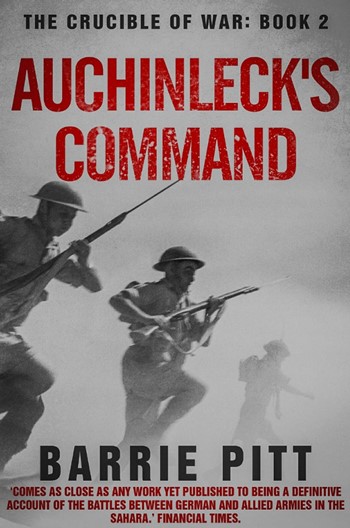
From: link: https://www.amazon.com/Barrie-Pitt/e/B001H6MPMC
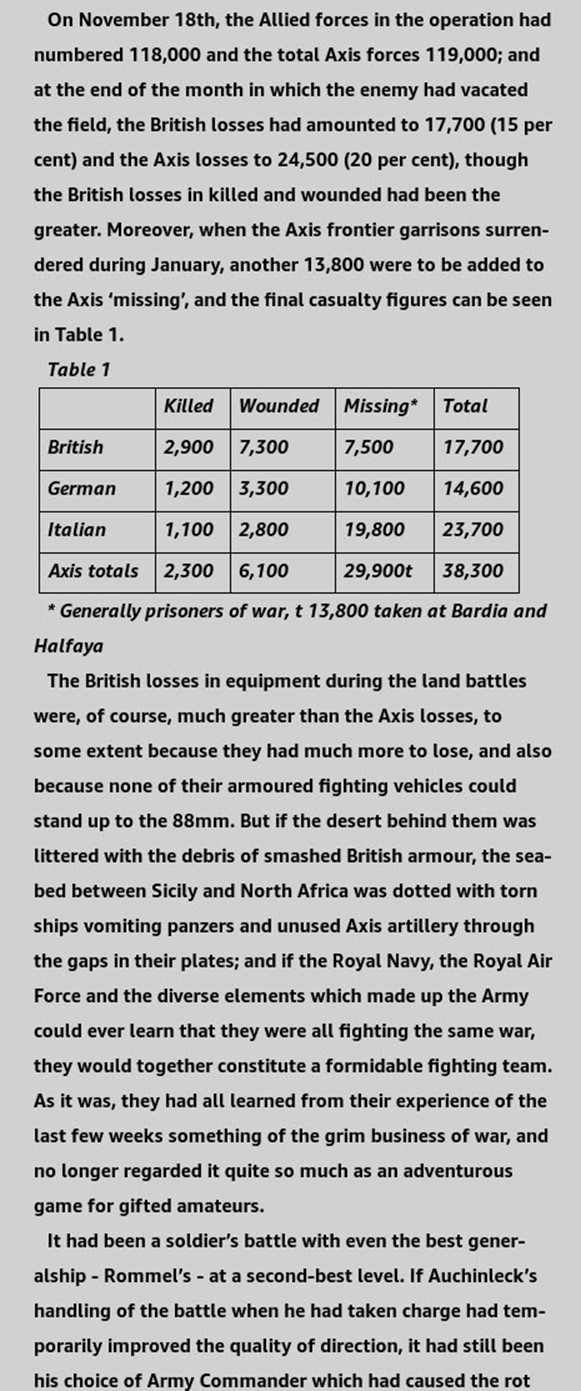
As far as our scenario goes, we are using DAK2 [http://www.ocsdepot.com/index.php/dak-4-05] to recreate aspects of the historical conflict. You could also use for a finer more granular level of detail – the BCS system title called Brazen Chariots that covers the same area and operation at the Grand tactical scale using battalions.
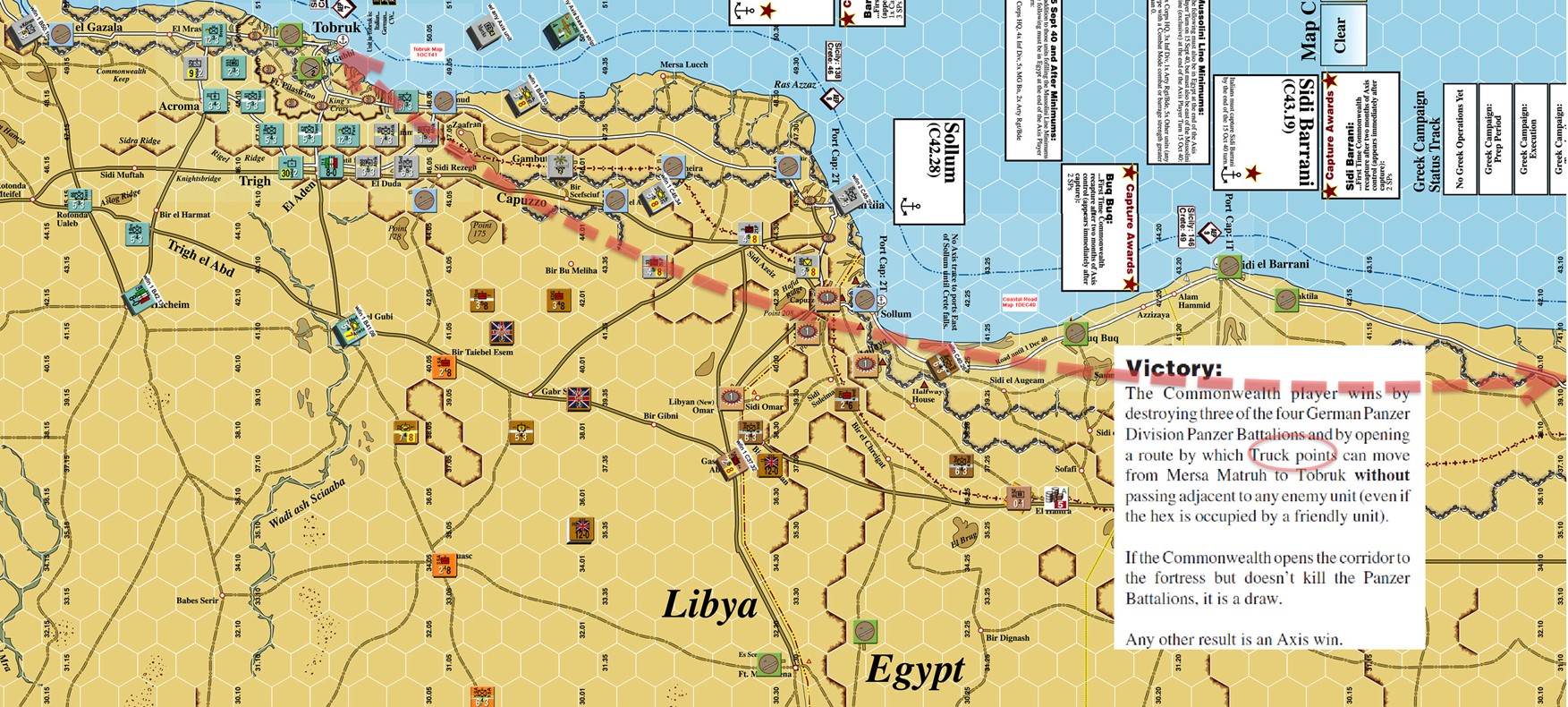
Many of you know DAK2 is a logistics centric Operation Combat System [OCS] scaled to focus in on bullets and beans.
This is opposed vassal based play the scenario runs for 9 turns. 19th November through 15th of December 1941. Turn 1 Rommel will not receive a reaction phase, and the Commonwealth
[ hereafter called Allies] have already begun movement on the 18th into German territory.
Historically the Allies had early good luck and actions. But Rommel’s response thwarted the Tobruk breakthrough and saw a drubbing handed out to the British armour. I’ll be playing the Allies in this scenario. Lets hope and plan for a better result!
In this scenario we have the Commonwealth going first. There is no German reaction and the Axis air is all inactive. First things first we need to bring up the South Africans from way South… What were they doing down here anyway!? Lost?
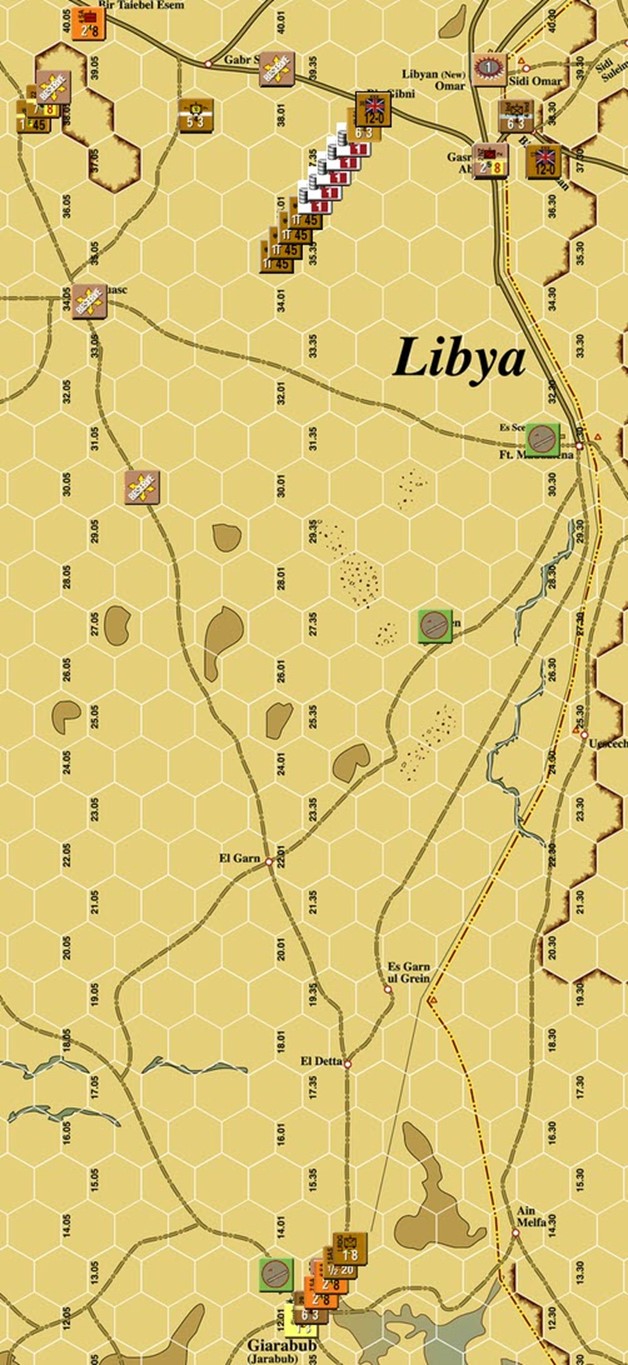
Then we move –
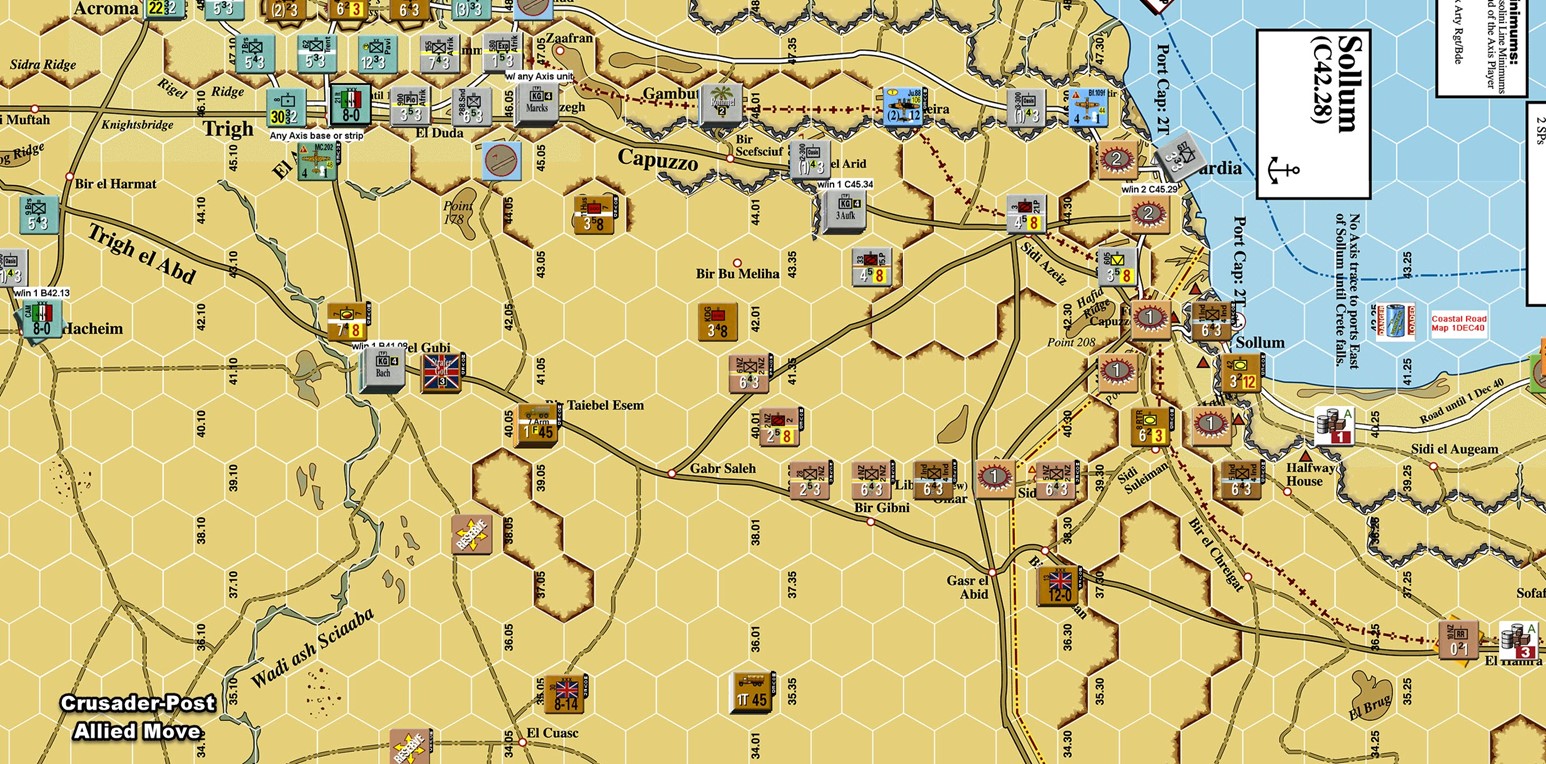
In case my new opponent is a fan of history, we extend a bit of a line West of the Italians, and North to slow any potential encirclements from the panzers. 7th armoured motors up the road a bit. The player did not elect to spread out his units. In Bir el Gubi. Big mistake.
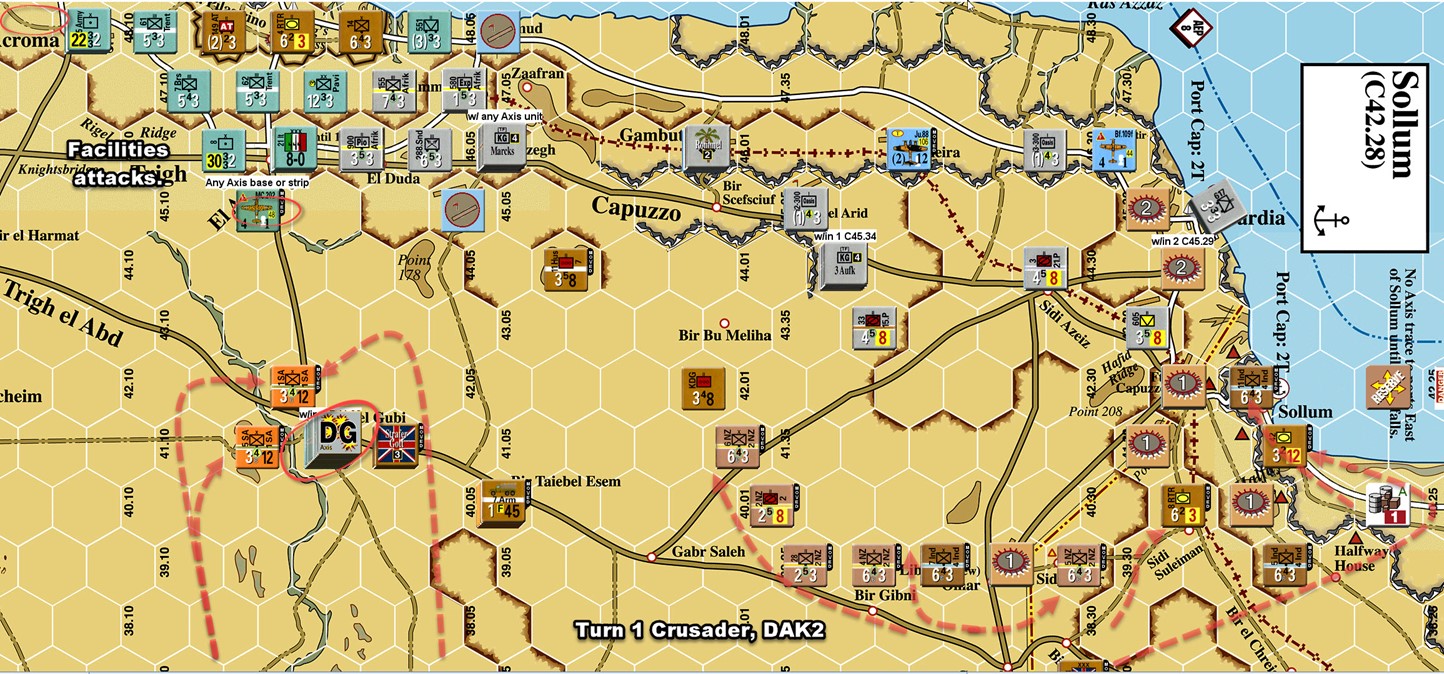
So quiet quickly we have encircled a few chaps. But also let an out for the Italian stack, it has a lot of supply, and he can likely get it out of there anyway. I’m hoping to have him invest in moving to create a Trace Supply route versus attacking me.
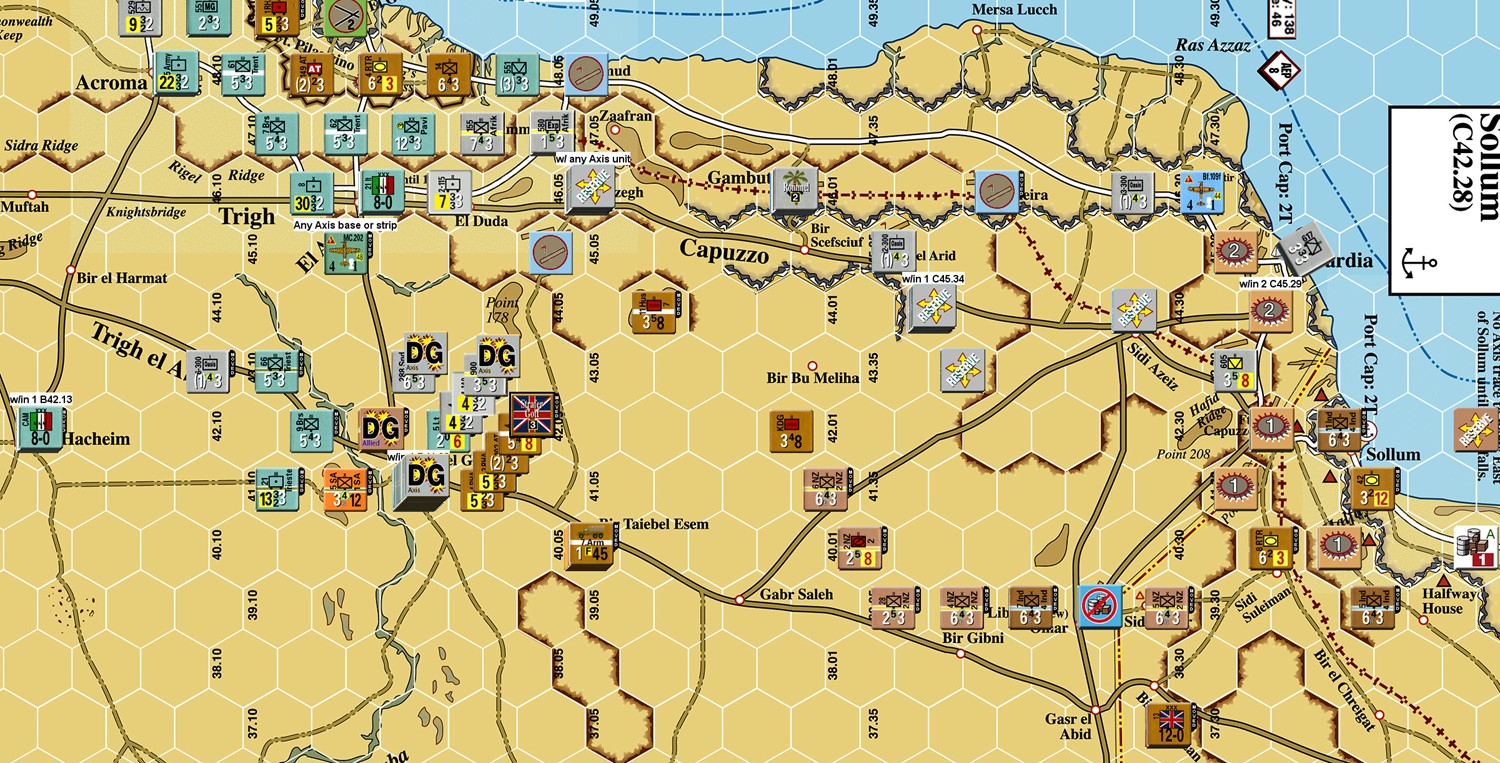
He does just that, and puts a lot of units in reserve. In my reaction phase I DG most of those guys. He does NOT move the forces from Bir ElGubi… so its gunna be on like donkey kong. We also thwart a potential attack by Dg’in his one strong infantry unit threatening the 7th Armoured Brigade in the rear.
More as it happens.
On to Turn 2.
Note my opponent elected to head back to the books and do some more study. Then we will re start. 
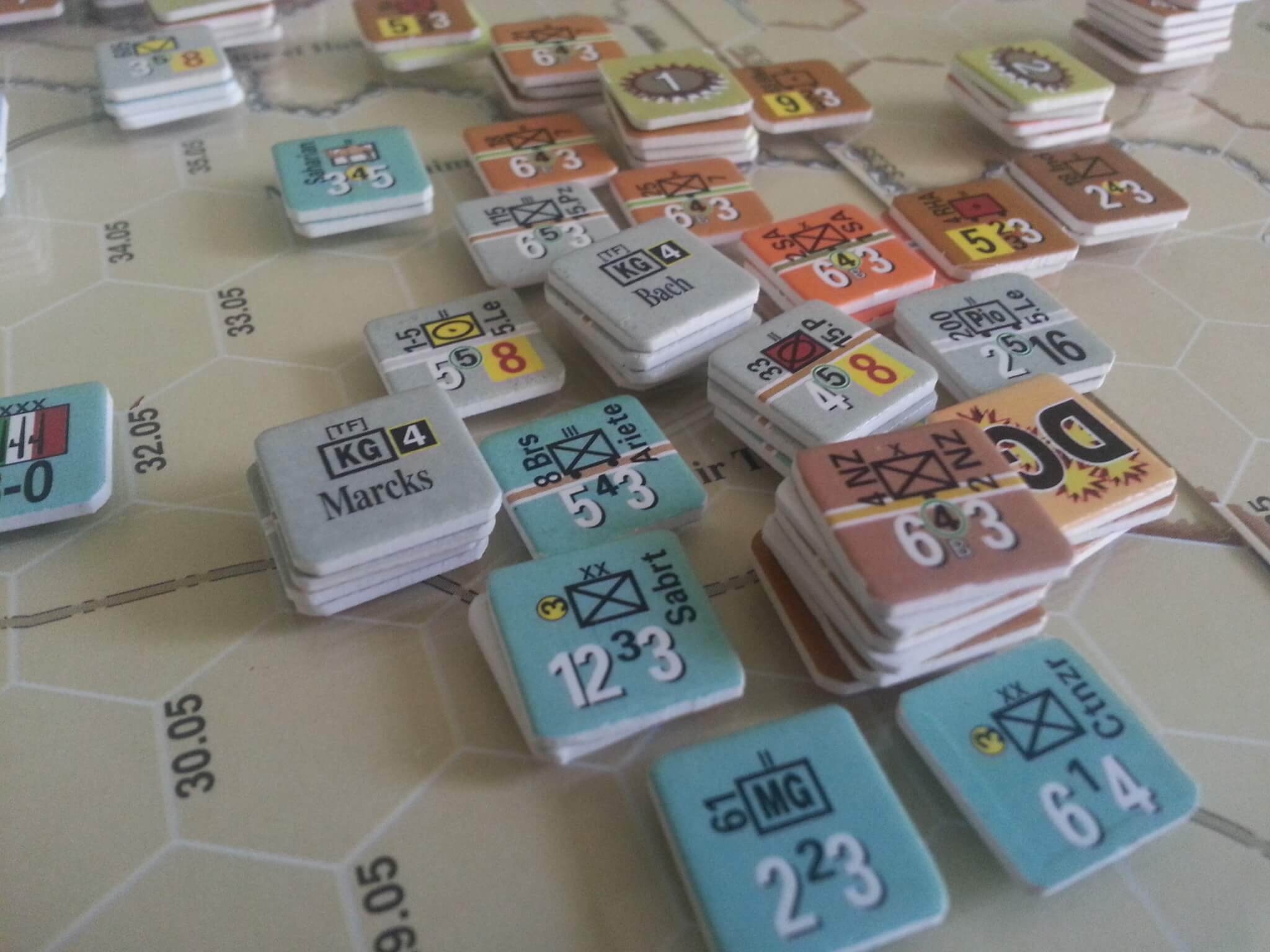
I really like BCS for a set piece battle like this. The full Crusader scenario is a lot of fun.
If I recall correctly the SA were supposed to guard the flank against German flanking attacks.